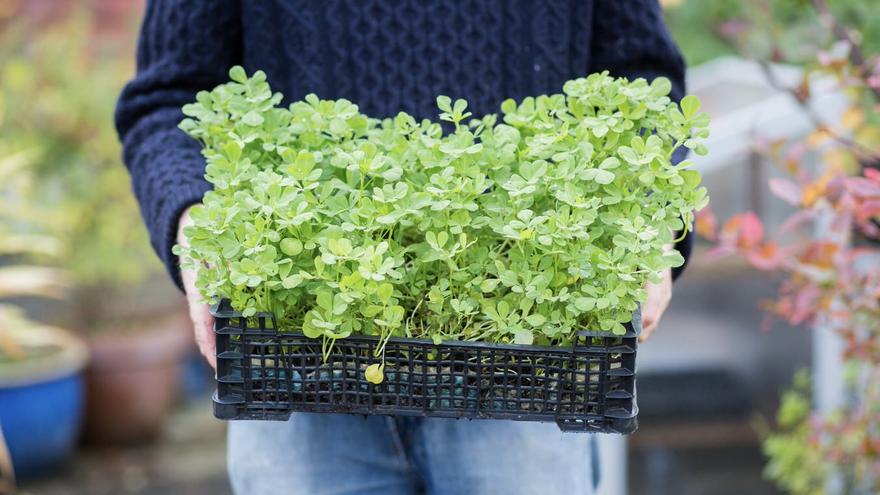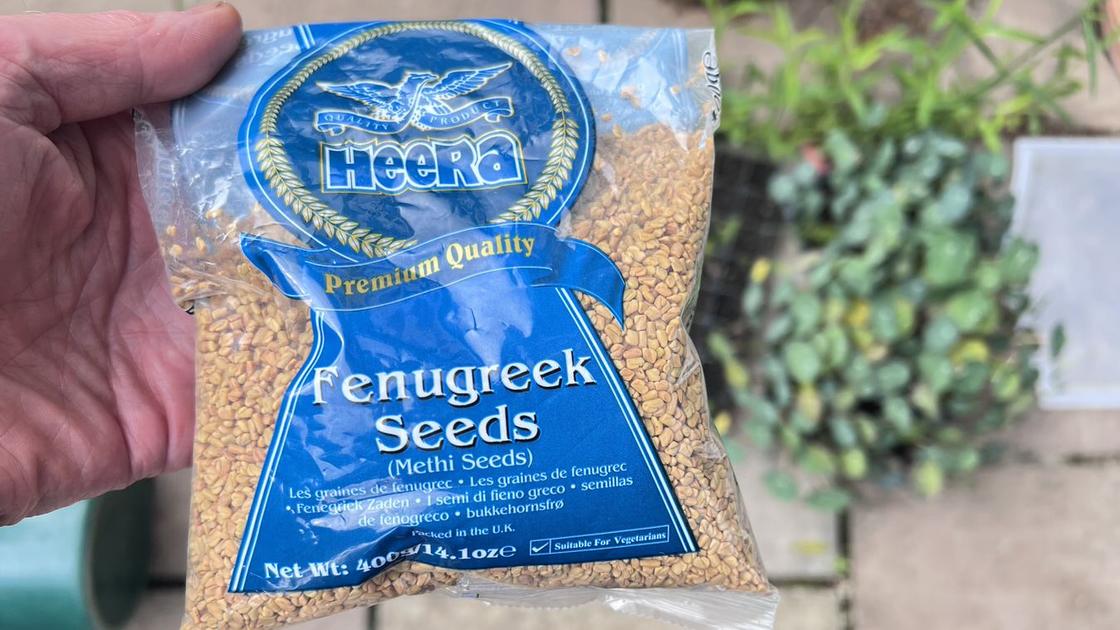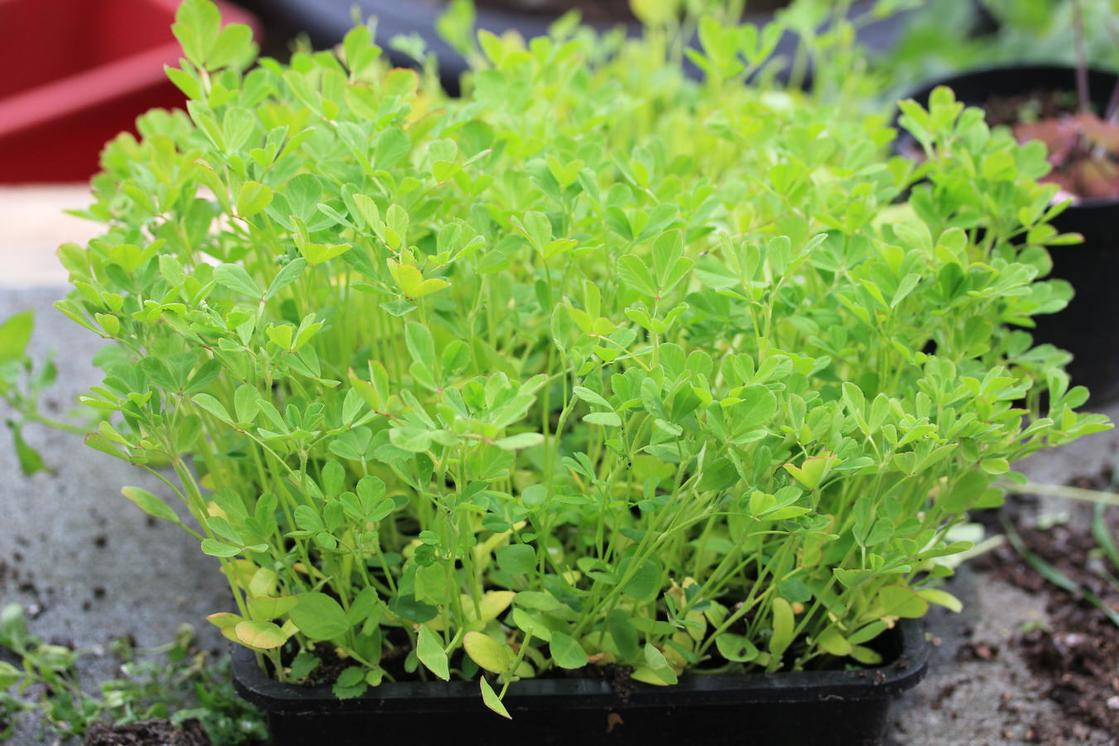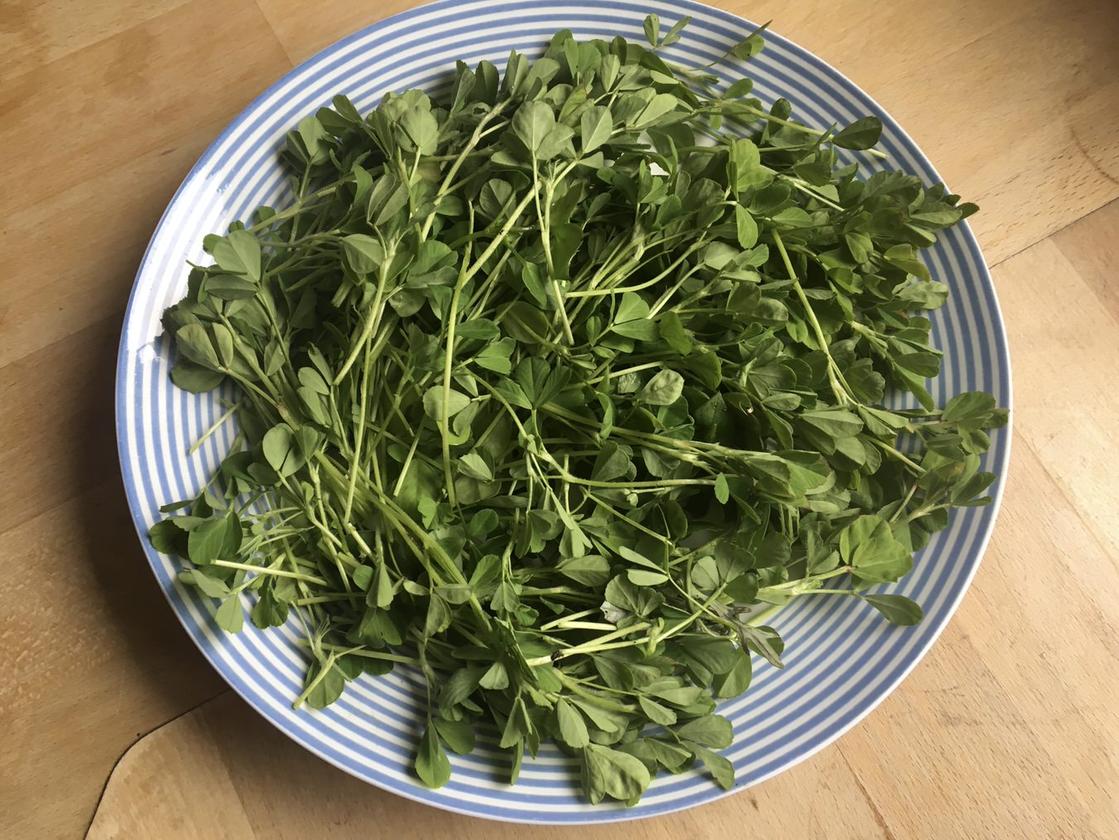How to Grow Fenugreek (Methi) Leaves Easily at Home for Authentic Curries

Fresh Fenugreek or Methi leaves have a unique and distinctive taste that add depth of flavour and an authentic touch to curries. They are widely used in Indian, Pakistani and Iranian cooking. However, outside these countries - and unless you live near a good Asian food store - it’s hard to find the fresh leaves in the shops.
But good news: they are quick and easy to grow. I’m wary about describing anything as ‘easy’ to grow - but fenugreek really is! It germinates quickly and a crop of small leaves will grow in as little as 10 days. They can even be grown from a spice pack, enabling a tray to be grown for just a few pence or cents. And you need very little space to grow them - just enough for a seed tray.
It’s a perfect project for less experienced gardeners, as well as for anyone who enjoys a proper, authentic curry.
Once grown, you can pick the fresh leaves and add them straight to dhals or curries as an alternative to spinach, just with a stronger flavour.
Or you can dry the leaves, and witness the bitter, earthy flavour of the fresh leaves transform to become sweet and intensely aromatic. The dried leaves can then be crumbled into curries at the end of cooking to add a wonderful depth of flavour. Dried home grown leaves have oodles more taste than those in supermarket packs.
What you need
All you need to grow it is:-
- A pack of fenugreek / methi spice seeds. If you don’t have these in your kitchen, you can find them in most supermarkets and health food shops. Larger, better value packs are available in Asian stores. Fenugreek from spice packs normally germinates well provided it hasn’t been sitting in the back of the cupboard for a long time.
- A bag of multipurpose compost / potting mix.
- A seed tray (an old mushroom tray - pictured above - works great, just line with newspaper to stop the compost falling out of the holes)
Spice packs offer an affordable way to buy fenugreek seed. In my experience, the seeds usually germinate well as long as they are not too old.
How to grow baby fenugreek leaves, step by step
- Fill your seed tray, mushroom tray - or any other shallow crate you can find - with compost.
- Lightly firm down and flatten the compost with the palm of your hand and then give it a good water.
- Sow the seeds thickly. You can sow around 1 to 2 tablespoons of seed in a full sized seed tray (35 × 20 cm / 14 × 8 inches). Adjust the amount correspondingly in smaller or larger trays - but there is no need to worry about precise amount of seeds or exact spacings. Just try to spread the seeds evenly, roughly 1cm / 1/2 inch apart, and avoid having too many seeds in clumps or touching each other.
- Cover the seeds with a thin layer - 1/2 cm, 1/4 inch - of compost, lightly firm down again, and give the tray another gentle water. Use a fine rose on a watering can if you have one.
- Put it in a place where it will get at least three or four hours of sun a day - either outside or inside.
- That’s it! Just keep the compost damp, like a rung out flannel, watering when necessary. Unless the weather is hot, they will probably only need occasional watering in the first week. However, once they are growing, daily watering will usually become necessary.
Once the plants have grown and the leaves fill the tray, you can start to snip off and use the leaves. You can harvest it as microgreen in as little as 7 - 10 days in warm weather, 14 - 21 days at cooler times of year. Or you can leave them for a week or two longer to grow a bit larger as pictured below. But don’t leave them too long or they will run out of vigour because they are growing so close together.
Fenugreek growing in a seed tray. This tray is slightly past its best and definitely needs picking ASAP - the slightly yellowing leaves are a sign it is losing vigour.
Growing larger fenugreek plants
Larger, full sized plants are equally easy to grow, they just take a bit longer. Simply use a larger pot or window box, ideally at least four inches / 10cm deep, and space the plants about 2 - 6 inches / 5 - 10 cm apart.
Drying fenugreek
The leaves are easily dried by spreading them out on a tray or plate and putting them in a warm, airy place. As the leaves dry, they become sweet and fragrant. It’s quite a magical transformation. I can’t think of anything else quite like it.
Be warned though: the spicy aroma will fill the whole room. It’s a warm and fragrant smell - I like it - but you may not want it in your living room. If you don’t have an out of the way place (like a shed, spare room or loft), an alternative is dry the leaves on sunny days outside. Or in the oven on its lowest temperature, which should take around 2 or 3 hours.
Once harvested, fenugreek can be spread out on a plate or tray to dry - it will dry quicker and better if you can spread the leaves out more than in the photo above.
Cooking with fenugreek / methi
A classic way to use the fresh leaves is ‘aloo methi’, potatoes with fenugreek, like this. The are also commonly added to dhal, rice and other curries - lots of recipe ideas online.
The fresh leaves can also be used to create interesting, flavoursome salads. Two on my list to try this summer are this cucumber and methi salad, and this one with onion, peanuts and a honey dressing.
The dried leaves are used to flavour many curry dishes, like Dhal and Butter chicken, and I use them most often in this Tandoori chicken recipe. They are often added at the end of a dish or to flavour a marinade. I find they add a real touch of authenticity to a home cooked curry.
Let me know how you get on
If you grow it, I’d love to hear how you get on in the comments.




0 comments
Leave a comment